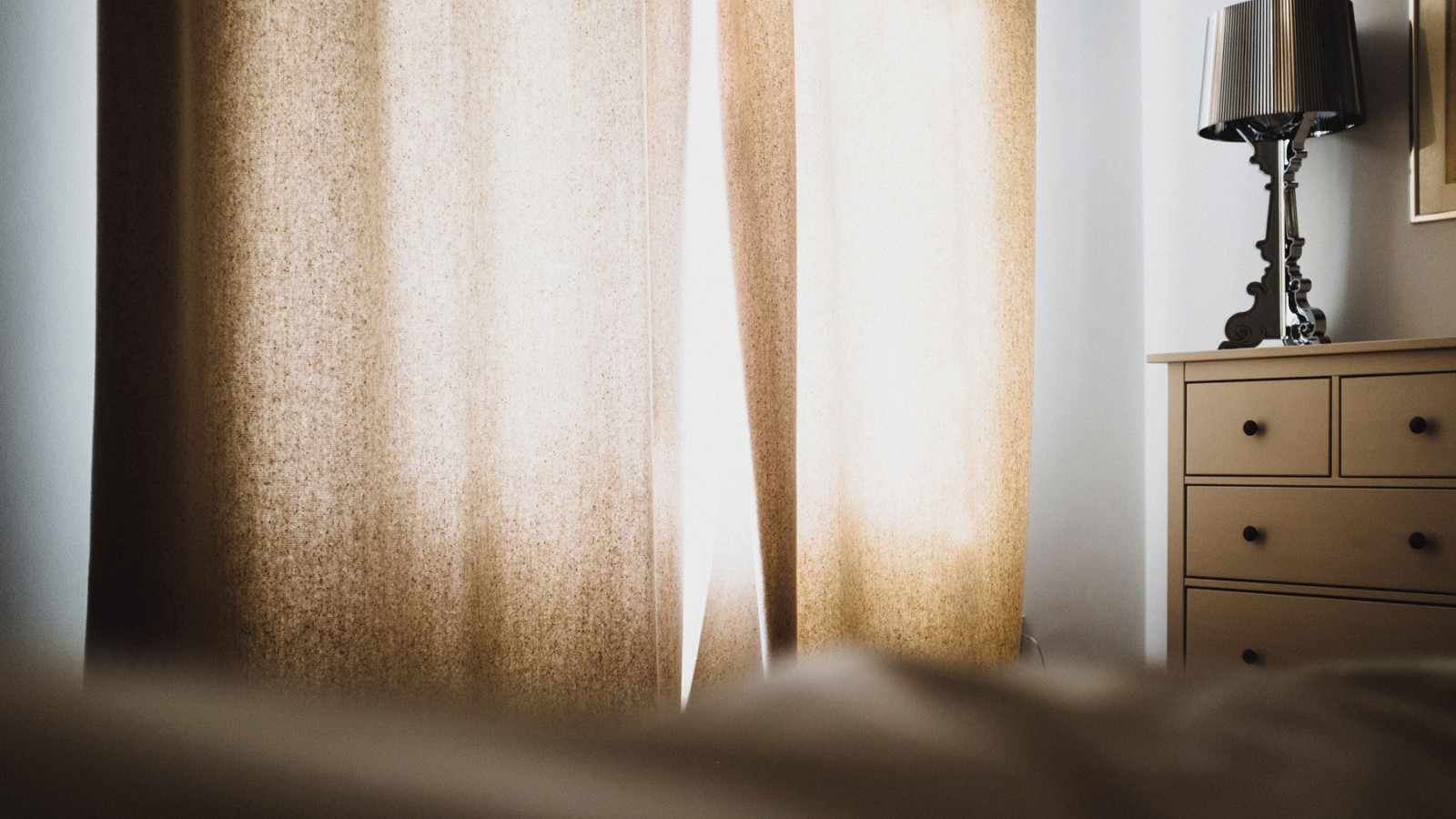From time to time this winter I have heard news reports that 'Thermal Drapes' or 'Thermal Curtains' are to be fitted to the windows of cold houses. There have also been reports that roller blinds are to be used to insulate bare windows. I can't understand why there is this emphasis that using a single drop of fabric across a window is preferable to the 'old-fashioned' lined curtains of the past. As they are normally hung, 'Thermal Drapes' are more efficient at cooling a room than retaining heat.
Nowadays the fabric sold as 'Thermal Drapes', (either from the roll or as made-up curtains), is a decorative printed fabric with a synthetic coating to the back which faces the window. This allows attractive curtains to be made from a single layer of material. The 'Thermal Coating' is usually white or a light coloured cream, and adds a significant stiffness to the fabric. In the past the Thermal Drape fabric did not have a decorated front face and was used only as an outer lining to the inner decorative drop.
A standard aluminium framed clear double glazed window has a nominal insulation R-Value of R0.26 whereas the adjacent wall is usually nine or ten times more effective at insulating the room. With such a wide discrepancy it is appropriate to concentrate on reducing the room's winter heat loss from the glazing, hence the emphasis on fitting curtains. While curtains can make an enormous difference they only will if they are properly installed. As I have explained in previous blogs, the process of heat loss is 'lazy' in that the thermal transfer does not try to struggle through the insulation, but rather takes the easier path through any thermal bridges. The more conductive the bridge the faster the transfer.
With curtains, the fabric itself does not have much insulation value, but even so most of the heat transfer from the warm room to the cold exterior is not through the material, but rather along the free air gaps between wall and curtain. To improve the performance of drapes the first effort should be to minimise the side gaps and seal off the bottom hem so that the cold air at the glass cannot drop down and then flow out into the room and thereby draw warm high-level air into the space between curtain and glass where it is rapidly cooled. In a quality curtain installation the drawn curtains will have their edges overlapping the wall by several folds. Each fold should touch the wall so as to make an air-movement seal. At the junction between curtains, the edges should overlap generously. To substantially increase the effectiveness of curtains they need to be a little too long so that the bottom edge folds out onto the floor so as to minimise the escape of cold air into the room.
Roller blinds, as normally installed, are not able to even begin to seal the air-flow at the sides and base and so are of little value as barriers to winter heat-losses.
While the effects of the open air movement paths from the room to the glass dominate the performance of curtains as insulation, their fabric and construction are also of significance; all the more as the air leakage is minimised.
In summer time a single bed-sheet is sufficient for night-time warmth, and as autumn approaches more layers are added until a full duvet, (or several blankets if you are old-school), is needed to keep the cold out — actually to keep the warmth in. The additional insulation value of the bedding derives from the air trapped within the thickness and fluffiness of the duvet's padding, or in the case of blankets, from the layers of trapped air between. Even a cotton sheet is of benefit as it traps another layer of air. Blankets also insulate by the fluffiness of the fabric which traps air at the magnifying-glass level.
If we are all familiar with the need to trap air for our bedding, why do we ignore this principle of thermal dynamics when it comes to curtains. How is it that a single layer of 'Thermal Drape' fabric, is considered adequate as winter-time curtains when in the past curtains had at least two layers of 'fluffy-faced' woven material. Thermal Drapes may have a texture to the interior face, but the outer face on the cold side is smooth so that a slight convection air current can more easily conduct thermal energy to the cold glass, thereby providing less insulation than a single drop of equal weight woven fabric.
It is my understanding that 'Thermal Drape' fabric does behave as a better thermal barrier than normal woven curtain material, but this is in hot climates where it assists in cooling the room by reflecting much of the solar radiation back out through the glass before it can heat the room's inner surfaces and contents.
The synthetic coating which is applied to the Thermal Drape fabric results in a significant stiffness which resists the natural tendency of woven curtain fabric to softly fold and drape against the walls and floor as an air seal, as described above.
As a best-practice example, at Government House in Wellington, the single glazed windows are fitted with triple-layer, woven fabric curtains with generous folds when drawn; well overlapped to the walls; and long enough to spread onto the floor. They also do not have pelmets — cold air doesn't rise.
Food for some logical thinking.




























 Most Popular
Most Popular Popular Products
Popular Products


